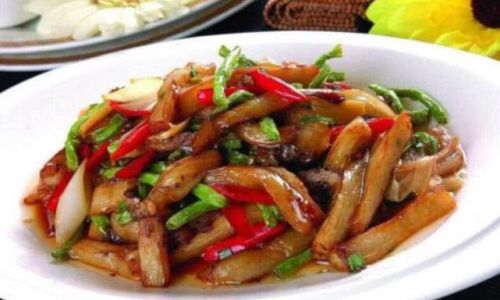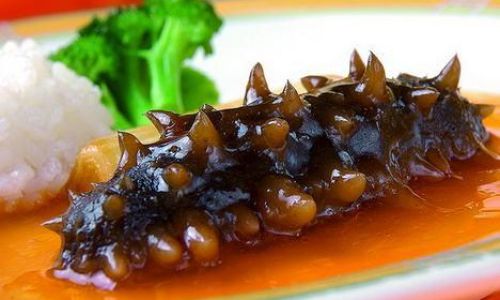Introduction
Stir-fried eggplant, a dish that combines the simplicity of everyday ingredients with the depth of flavor achievable through meticulous cooking techniques, stands as a testament to the versatility of Chinese cuisine. Whether you’re a seasoned chef or a home cook eager to expand your repertoire, mastering how to make stir-fried eggplant can elevate your culinary skills and delight your taste buds. This comprehensive guide will walk you through every step of the process, from selecting the perfect eggplant to creating a sauce that complements its earthy flavor. By the end, you’ll be confident in your ability to whip up a plate of delicious, restaurant-quality stir-fried eggplant that’s sure to impress.

Chapter 1: Understanding Eggplant
Before diving into the recipe, it’s crucial to understand the basics of eggplant, also known as aubergine. This purple vegetable belongs to the nightshade family and is native to Asia. Its fleshy, tender interior and slightly bitter taste make it an excellent candidate for stir-frying, where high heat quickly cooks the exterior while keeping the inside moist and flavorful.
1 Varieties of Eggplant
Several varieties of eggplant exist, each with its unique shape, size, and skin thickness. For stir-frying, the most common choices are:
- Globe Eggplant: Round and medium-sized, with a smooth, thick skin.
- Italian Eggplant: Long and slender, with a thinner skin and more seeds.
- Japanese Eggplant: Smaller and more slender than Italian, with a tender skin that doesn’t need peeling.
For stir-fried eggplant, Japanese or globe varieties are ideal due to their tender texture and manageable size.
2 Selecting and Storing Eggplant
When choosing eggplant, look for firm, smooth-skinned specimens without bruises, soft spots, or wrinkles. The color should be vibrant and consistent. Store eggplant in a cool, dark place for up to three days or refrigerate for up to a week, though it’s best used soon after purchase to retain its freshness.
Chapter 2: Preparation Techniques

Proper preparation is key to achieving the perfect stir-fried eggplant. This involves washing, cutting, and sometimes even salting the vegetable to draw out excess moisture and bitterness.
1 Washing and Peeling
- Washing: Rinse eggplant under cold running water to remove dirt and residue. Pat dry with a paper towel to avoid excess moisture during cooking.
- Peeling: While the skin of Japanese eggplant is tender enough to eat, larger varieties may require peeling, especially if the skin is tough or bitter. Use a vegetable peeler to remove the skin in strips.
2 Cutting Techniques
Cutting eggplant into uniform pieces ensures even cooking. For stir-frying:
- Dice: Cut into small, bite-sized cubes for quick cooking and even seasoning distribution.
- Slices: Cut into thin rounds or half-moons for a more elegant presentation.
- Strips: Cut into long, thin strips for a stir-fry that resembles traditional Chinese dishes.
3 Salting (Optional)
Some recipes recommend salting eggplant slices and letting them sit for 30 minutes to draw out moisture and bitterness. Afterward, rinse and pat dry to remove excess salt and moisture. This step is optional and more common in dishes where the eggplant is the primary ingredient and needs to be particularly tender and flavorful.
Chapter 3: Stir-Frying Basics
Stir-frying is a cooking technique that uses high heat and a small amount of oil to quickly cook ingredients, preserving their color, texture, and flavor. Here’s how to set up your kitchen for successful stir-frying.

1 Equipment
- Wok or Large Frying Pan: A wok’s rounded bottom and high sides are ideal for stir-frying, but a large, flat-bottomed frying pan works well too.
- Spatula or Wooden Spoon: A sturdy spatula or wooden spoon is essential for tossing ingredients evenly.
- High Heat Source: Gas stoves are best, but an electric stove with a high heat setting can work.
2 Oil Selection
Choose an oil with a high smoking point, such as peanut, vegetable, or canola oil, to ensure it doesn’t burn at high temperatures. Avoid olive oil, which has a lower smoking point and may impart unwanted flavors.
3 Preheating the Pan
Preheat your pan over high heat until a drop of water sizzles and evaporates immediately. This ensures the oil will reach the right temperature quickly, creating a sear that locks in flavor and texture.
Chapter 4: Stir-Fried Eggplant Recipe
Now, let’s dive into the recipe for classic stir-fried eggplant. This dish is simple yet flavorful, highlighting the natural sweetness of eggplant with garlic, ginger, and soy sauce.
Ingredients:

- 2 medium eggplants (about 1 pound), cut into bite-sized pieces
- 2 tablespoons vegetable oil
- 3 cloves garlic, minced
- 1 tablespoon grated fresh ginger
- 2 green onions, sliced (white and green parts separated)
- 1/4 cup chicken or vegetable broth (optional for added moisture)
- 3 tablespoons soy sauce
- 1 tablespoon oyster sauce (optional for added umami)
- 1 teaspoon sugar or honey (to balance bitterness)
- 1 teaspoon cornstarch mixed with 1 tablespoon water (for thickening)
- Salt and pepper to taste
- Sesame oil (optional for garnish)
- Chopped fresh cilantro or parsley (optional for garnish)
Instructions:
Step 1: Prepare the Ingredients
- Wash and cut the eggplant as described in Chapter 2.
- Mince the garlic and grate the ginger.
- Slice the green onions, separating the white and green parts.
Step 2: Stir-Fry the Aromatics
- Heat the vegetable oil in a preheated wok or large frying pan over high heat.
- Add the minced garlic, grated ginger, and white parts of the green onions. Stir-fry for about 30 seconds until fragrant but not burnt.
Step 3: Add the Eggplant
- Add the eggplant pieces to the pan in a single layer, if possible. Stir-fry for about 3-4 minutes, stirring occasionally, until the eggplant starts to soften and turn golden brown.
Step 4: Season and Cook
- Pour in the chicken or vegetable broth (if using) to create steam and cook the eggplant more evenly.
- Add the soy sauce, oyster sauce (if using), and sugar or honey. Stir to combine and cook for another 2-3 minutes, until the eggplant is tender but still holds its shape.
Step 5: Thicken the Sauce
- Give the cornstarch-water mixture a stir to ensure it’s well combined, then pour it into the pan. Stir quickly to combine and cook for another minute, until the sauce thickens slightly.
Step 6: Taste and Adjust Seasoning
- Taste the stir-fry and adjust the seasoning with salt and pepper as needed.
Step 7: Garnish and Serve

- Remove from heat and stir in the green parts of the green onions.
- Drizzle with a little sesame oil (if using) for added flavor.
- Garnish with chopped fresh cilantro or parsley (if using).
Step 8: Serve Hot
- Serve the stir-fried eggplant immediately while hot, paired with steamed rice or your favorite grain for a complete meal.
Chapter 5: Tips and Variations
Stir-fried eggplant is a versatile dish that can be adapted to suit different tastes and dietary preferences. Here are some tips and variations to inspire your cooking:
1 Tips for Perfect Stir-Frying
- Don’t Crowd the Pan: Overcrowding the pan will lower the temperature and steam the eggplant instead of stir-frying it. Cook in batches if necessary.
- High Heat: Maintain high heat throughout to create a crispy exterior and tender interior.
- Stir Occasionally: Stir the eggplant only occasionally to allow it to develop a nice sear.
2 Flavor Variations
- Spicy Kick: Add a pinch of red pepper flakes or diced fresh chilies for a spicy kick.
- Umami Boost: Incorporate a tablespoon of fermented black beans or soy sauce for an added umami flavor.
- Vegetarian/Vegan: Use vegetable broth instead of chicken broth and ensure all ingredients are vegetarian or vegan-friendly.
- Garnishes: Experiment with different garnishes like toasted sesame seeds, sliced scallions, or a drizzle of chili oil.
3 Serving Suggestions
- Main Dish: Pair stir-fried eggplant with steamed rice, noodles, or quinoa for a satisfying meal.
- **Side





0 comments